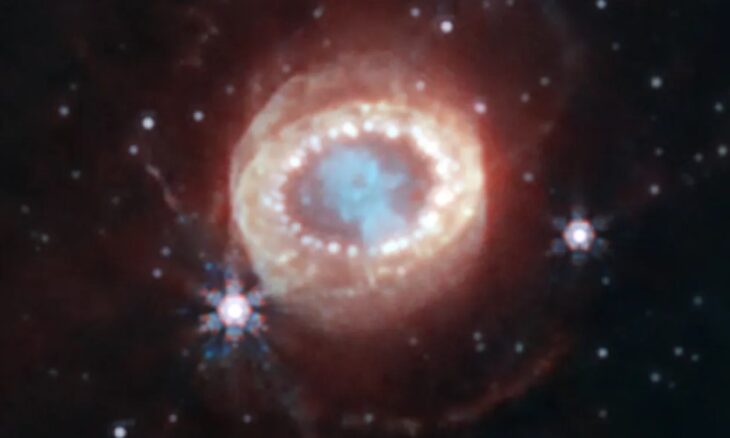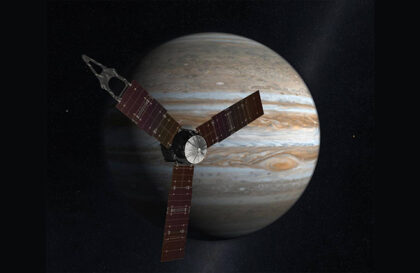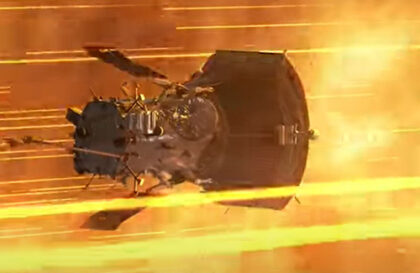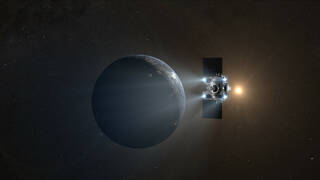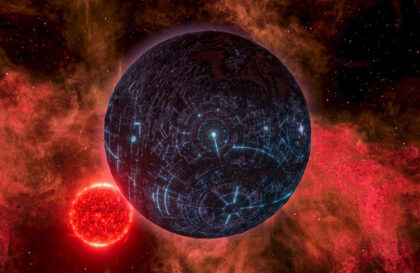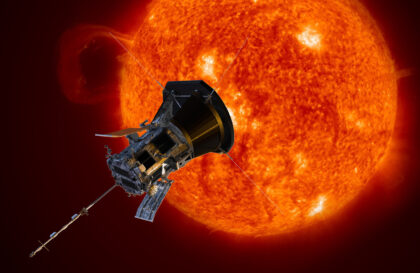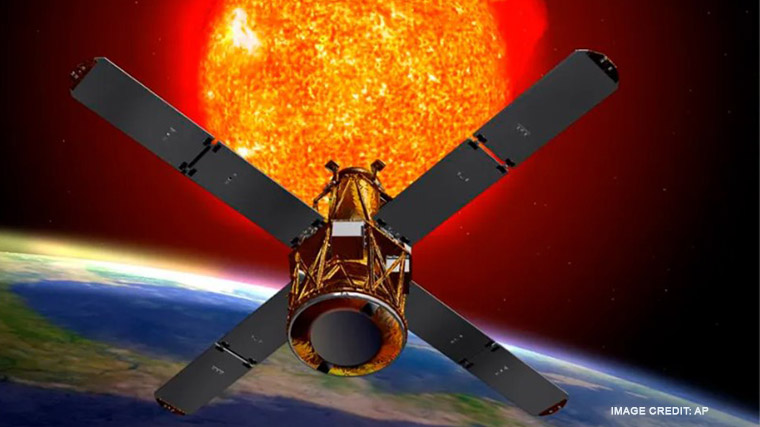A supernova, the brightest in 420 years, signaled the explosive death of a supergiant star in the Large Magellanic Cloud.
The explosion happened 36 years ago. The remains of the star were captured by the James Webb Space Telescope (JWST). The Observatory’s Near Infrared Camera (NIRCam) captured the expanding remnants of this supernova with unprecedented resolution, revealing new details about the process.
It is the closest observed supernova since Kepler’s supernova in 1604. It was originally discovered in 1987 and named Supernova 1987A. The supernova lies about 168,000 light-years from Earth in the Large Magellanic Cloud and represents the destruction of a supergiant blue star named Sanduleik-69 202, which had a mass about 20 times that of the Sun.
This supernova was so bright that it could be seen with the naked eye in the southern hemisphere of the Earth, and since then astronomers have been watching the expanding debris. The JWST was deployed to study the remnants of a supernova, providing a spectacular image of the aftermath of a dead star’s explosion, thanks to research led by Mikako Matsuura of Cardiff University in the UK.
JWST measured the shock wave of a supernova as it interacted with surrounding material. Blue supergiants, approaching the end of their lives, emit a huge amount of matter. The properties of supernova 1987A’s shock wave were studied by Hubble, who tracked its collision with a ring of material ejected by the star tens of thousands of years before the explosion. The collision slowed the shock wave from 4350 miles per second to 1430 miles per second (from 7000 km/s to 2300 km/s).
The ring began to lighten and formed a pearl bracelet. Two other rings, located in a different plane, remained mysterious; they may be sites of interaction between the stellar wind and ejected star material before the explosion.
According to another version, these bright dots may be the result of the illumination of an invisible neutron star that arose as a result of a supernova explosion. JWST revealed that the shock wave expanded beyond the main ring and accelerated again to 2,236 miles per second (3,600 km/s), creating new hotspots that could eventually become as bright as those already known.
Blurred radiation from the excited gas around the site of the supernova explosion was also seen. In addition, inside the main ring, where gas and dust form a cloud of ejecta, two mysterious arcs or crescents have been found, possibly representing the outer layers of supernova-ejected gas.
There is circumstantial evidence for the existence of a neutron star in the form of X-rays detected by NASA’s Chandra and NuSTAR X-ray observatories, as well as Atacama Large Millimeter/Submillimeter Array (ALMA) observations that point to a neutron star. It can be hidden in one of the dust balls in the center of the remnant.
JWST will continue to monitor the expanding supernova remnant and look for the hitherto unseen neutron star at the center of the explosion.
Image credit:
https://www.space.com
https://public.nrao.edu
